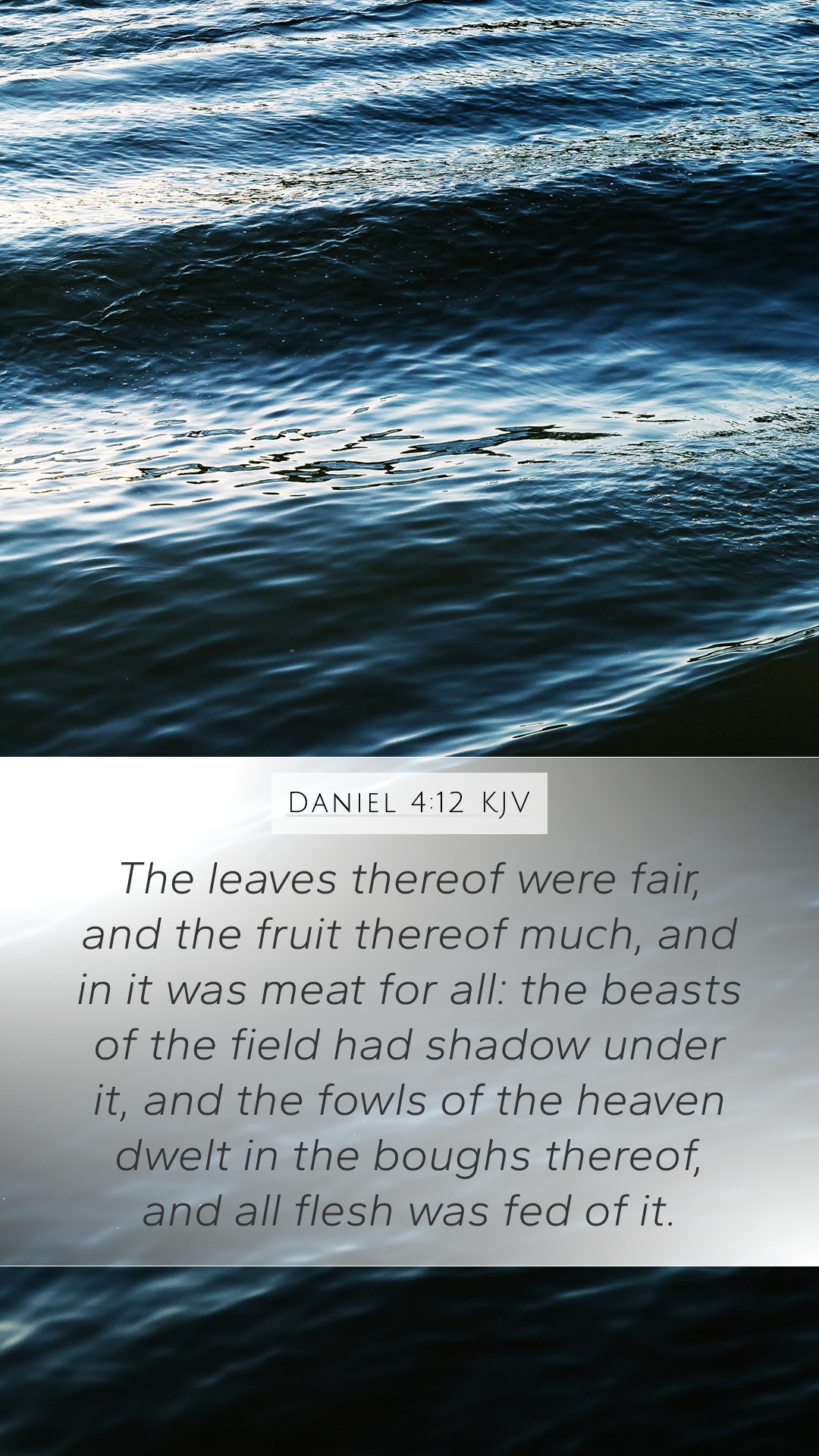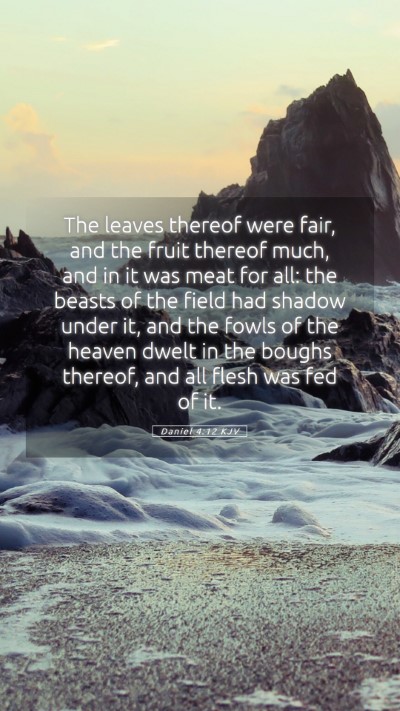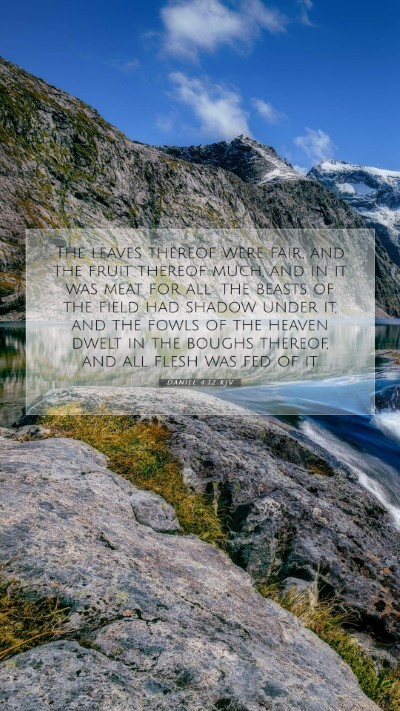Bible Verse Meaning: Daniel 4:12
In Daniel 4:12, the verse states:
"The leaves thereof were fair, and the fruit thereof much, and in it was meat for all: the beasts of the field had shadow under it, and the fowls of the heaven dwelt in the boughs thereof, and all flesh was fed of it." (KJV)
This verse serves as a vivid imagery of the greatness and prosperity of King Nebuchadnezzar's reign, symbolizing the benefits of his rule for both people and nature.
Summary of Insights from Public Domain Commentaries
Matthew Henry's Commentary:
Henry emphasizes the towering nature of the tree in Daniel’s vision, representing the king himself. The tree symbolizes his powerful and far-reaching kingdom that provides sustenance and safety to many. The fair leaves and abundant fruit signify blessings and the prosperity derived from God's grace during Nebuchadnezzar's reign. However, there is an underlying warning about pride as represented by the tree's eventual cutting down, indicating divine judgment.
Albert Barnes' Notes:
Barnes elaborates on the ecological imagery depicted in this verse. The lush leaves and plentiful fruit illustrate the idea of provision and nurturing inherent in a successful kingdom. The mention of beasts and fowls highlights how Nebuchadnezzar's kingdom reached different layers of life, providing refuge and sustenance. This reflects not only his political strength but also his responsibility towards subjects both human and animal. Barnes also connects this imagery to the tendency of leaders to become prideful and distracted from their divine purpose.
Adam Clarke's Commentary:
Clarke interprets the tree as a representation of the empire of Babylon under Nebuchadnezzar. He notes how the prosperity under Nebuchadnezzar is depicted through the manifestation of nature's bounty. The imagery of the tree offering shelter aligns with the kingdom's protective role over its people. Clarke points out that while it is a portrayal of success, the eventual fate of the tree serves as a caution against the hubris that comes from such greatness. The divine intervention indicated through the tree's fate presents the balance of power between man and God.
Understanding Scripture in Context
This verse must be examined within the narrative of Daniel chapter 4, where Nebuchadnezzar is warned through dreams about the consequences of pride and the ultimate sovereignty of God over earthly kingdoms. The imagery serves a dual purpose: it illustrates God's blessings and the resultant responsibilities of leaders to remain humble.
Related Bible Cross References
- Isaiah 2:12: A warning about pride and the day of the Lord.
- Ezekiel 31:3: A metaphorical description of Assyria as a mighty and high tree.
- Matthew 7:19: "Every tree that bringeth not forth good fruit is hewn down, and cast into the fire."
Practical Application of Daniel 4:12
For believers, this passage encourages reflections on leadership and stewardship. It serves as a reminder of the consequences of overstepping the bounds of humility that God requires of those in authority. The lushness of the tree can be interpreted as a divine blessing, indicating that prosperity should lead to gratitude and an understanding of one’s role in nurturing others.
Conclusion
In sum, Daniel 4:12 portrays a rich metaphor encompassing themes of greatness, provision, and the risks associated with pride. Through the insights of various commentaries, believers are guided towards a deeper understanding of Scripture, balancing an appreciation for God's blessings with the accountability that comes with power.
Whether in individual study or group discussions, this verse and its meanings can foster significant theological discussions, guiding individuals towards a more profound interpretation of how to live out biblical principles in daily life.
Further Exploration
For those involved in bible study groups, consider discussing how varying interpretations of this verse can be vibrant catalysts for transformative dialogues about faith, pride, leadership, and community stewardship.


